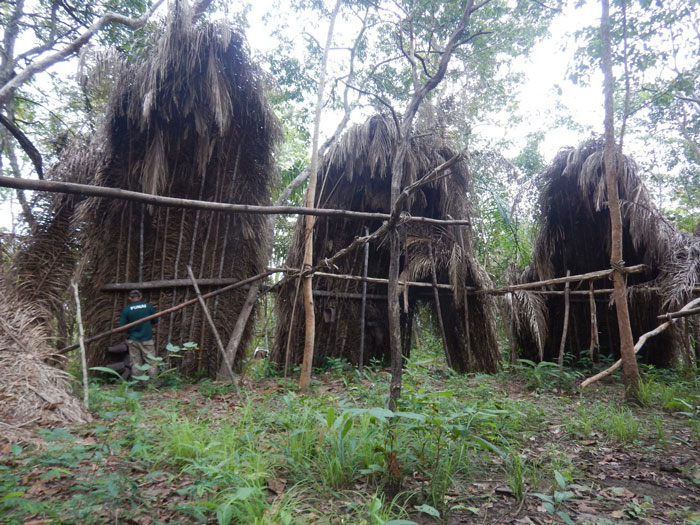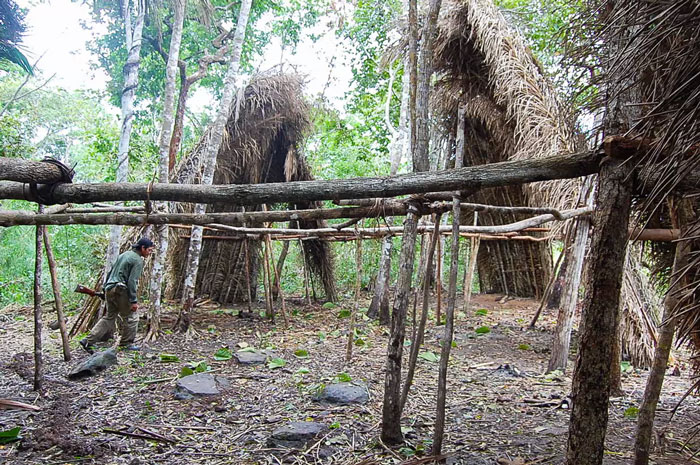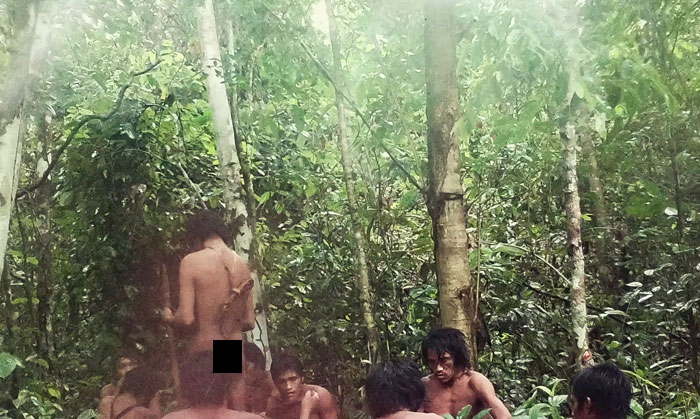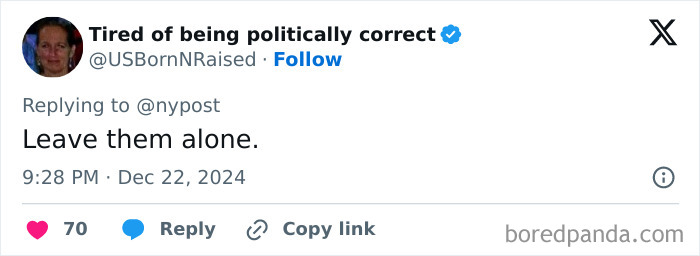Groundbreakingfootageof anIndigenous communitycalled theMassaco, living inRondônia, Brazil, has been unveiled. Known for their unique use of traps and bows, the Massaco have been thriving under protection despite threats ofdeforestationandclimate change. The Massaco’s no-contact policy has preserved their land. However, rising numbers and environmental challenges currently threaten to force them into contact with external populations.HighlightsMassaco community captured in unprecedented footage, thriving in Brazil’s Rondônia.Massaco’s no-contact policy preserves their land, despite rising threats.Unique hardwood spike traps protect Massaco territory from outsiders.Amid their population’s growing numbers, the isolated community’s deforested Rondônia state has intensified their efforts to avoid contact.Moreover, they have been using hidden hardwood spike traps capable of disabling vehicles to protect their land.RELATED:Image credits:funaiThese signature traps, increasingly found near Brazil’s National Indigenous Peoples Foundation (Funai) bases, have underlined their determination to remain secluded.Funai is a government agency responsible for protecting and promoting the rights and territories ofIndigenouspeoples in Brazil.The Massaco, named after the river that runs through their domain near Brazil’s border with Bolivia, is one of 28 isolated communities confirmed to exist in Brazil,The Guardianreported on Sunday (December 22).Photos have revealed a thriving, never-before-seen tribe inRondônia, BrazilImage credits:funaiThe community is reportedly notable for being meticulous hunters with longbows and for protecting their land from unwanted visitors with traps of hidden hardwood spikes so sturdy they can take out a tractor tire.Consequently, the community’s spikes have been found at the base from which Funai veteran Altair Algayer has overseen the protection of the 421,000-hectare (1.04m-acre) territory.Algayer reportedly used rainforest cameras to estimate the Massaco population, without contact, using images from 2019 and 2024 to provide crucial proof of their existence for Funai’s protection efforts.Image credits:funaiAccording to Algayer’s footage, the Massaco River people are becoming more numerous, a trend apparent among many un-contacted communities in the Amazon,The Guardianreported.In the 1980s, the Massaco faced threats from loggers and rubber tappers, with Funai initially attempting peaceful contact through gifts to make way for development projects.However, in 1987, Funai shifted to a no-contact policy after recognizing the catastrophic impact of contact, turning Massaco’s land intoBrazil’s first territory exclusively protected for un-contacted populations.“On our most recent expeditions and in satellite images, we’ve seen more new tapiris [thatched huts], so I wouldn’t be surprised if there are 300 individuals,” Algayer, known as Alemão (the German, after his ancestry), toldThe Guardian.Image credits:OpenStreetMapAccording to Algayer, the community grew from an estimated population of 100 to 120 in the 1990s to an estimated 50 families.“How they shoot the arrow, we have no idea,” Algayer admitted. “OtherIndigenous peoplealso try to understand, laugh, and say it’s impossible. Perhaps lying down, they say, but to this day, we have no answer to this mystery.”Funai has reportedly documented the Massaco’s movements and camps, mapping trails, photographing artifacts, and tracking seasonal patterns to avoid direct contact.They have made continuous efforts to remain secludedImage credits:funaiThe community has been leaving tools to prevent the group from seeking them elsewhere while studying their unique long bows, some over three meters long, and their use of fire to prepare new settlement areas.“That’s why many Funai experts suspect they came from the other side of the Guaporé River, from Bolivia,” anthropologist Amanda Villa toldThe Guardian.The Sirionó people, in particular, used similar bows, tapir construction, and grooming. “But these are guesses. We can’t say anything for sure,” she explained.Image credits:funaiThe Massaco are distinct from neighboring groups due to their unique bows, tall tapirs, traps, animal skull markers, and appearance, while their language remains unintelligible even to localIndigenouslinguists.Analyzing new images, Algayer pointed to the apparent leader of the group: “The oldest one holding the stick has the spike under his arm.“The stick he holds serves as a staff, but it is used more for drilling holes in the ground to place the spikes.“He has this leadership posture, helps to place the spikes, and tells where to place them.”Image credits:funaiThe growth of isolated peoples like the Massaco highlights both a hopeful resurgence and the looming risks of contact due to climate change and land needs, as per Algayer.In 2014, a Funai agent had a rare encounter with two Massaco men while they were placing spikes near a base, an act that underscored their determination to remain un-contacted.The incident escalated as six others joined, creating a trail of spikes spanning two kilometers.The tribe’s unique hand-made traps and language are what make them stand out from other neighboring groupsImage credits:funai“The growth of isolated peoples is undoubtedly wonderful news, but on the other hand, it alerts us to the imminent risk of contact, not only because it could lead to a need for more land, but also because of climate change,” Algayer said.He added: “If the isolated peoples run out of water in their streams, they will go closer to other populations.”Image credits:funaiJanete Carvalho, Funai’s territorial protection director, echoes these concerns. “We will face this at some point. Nobody knows what this will lead to because, in principle, there’s a real chance that contact will happen,” she says. “Of course, we don’t want that.”Users online suggest humans “leave them alone”Image credits:normposterImage credits:USBornNRaisedImage credits:Nycshorty222Image credits:WadeLevienImage credits:MF_CLOUDSImage credits:PerfectWeather0Image credits:JaguarstopandasThanks! Check out the results:
Groundbreakingfootageof anIndigenous communitycalled theMassaco, living inRondônia, Brazil, has been unveiled. Known for their unique use of traps and bows, the Massaco have been thriving under protection despite threats ofdeforestationandclimate change. The Massaco’s no-contact policy has preserved their land. However, rising numbers and environmental challenges currently threaten to force them into contact with external populations.
HighlightsMassaco community captured in unprecedented footage, thriving in Brazil’s Rondônia.Massaco’s no-contact policy preserves their land, despite rising threats.Unique hardwood spike traps protect Massaco territory from outsiders.
Amid their population’s growing numbers, the isolated community’s deforested Rondônia state has intensified their efforts to avoid contact.
Moreover, they have been using hidden hardwood spike traps capable of disabling vehicles to protect their land.
RELATED:

Image credits:funai
These signature traps, increasingly found near Brazil’s National Indigenous Peoples Foundation (Funai) bases, have underlined their determination to remain secluded.
Funai is a government agency responsible for protecting and promoting the rights and territories ofIndigenouspeoples in Brazil.
The Massaco, named after the river that runs through their domain near Brazil’s border with Bolivia, is one of 28 isolated communities confirmed to exist in Brazil,The Guardianreported on Sunday (December 22).
Photos have revealed a thriving, never-before-seen tribe inRondônia, Brazil

The community is reportedly notable for being meticulous hunters with longbows and for protecting their land from unwanted visitors with traps of hidden hardwood spikes so sturdy they can take out a tractor tire.
Consequently, the community’s spikes have been found at the base from which Funai veteran Altair Algayer has overseen the protection of the 421,000-hectare (1.04m-acre) territory.
Algayer reportedly used rainforest cameras to estimate the Massaco population, without contact, using images from 2019 and 2024 to provide crucial proof of their existence for Funai’s protection efforts.

According to Algayer’s footage, the Massaco River people are becoming more numerous, a trend apparent among many un-contacted communities in the Amazon,The Guardianreported.
In the 1980s, the Massaco faced threats from loggers and rubber tappers, with Funai initially attempting peaceful contact through gifts to make way for development projects.
However, in 1987, Funai shifted to a no-contact policy after recognizing the catastrophic impact of contact, turning Massaco’s land intoBrazil’s first territory exclusively protected for un-contacted populations.
“On our most recent expeditions and in satellite images, we’ve seen more new tapiris [thatched huts], so I wouldn’t be surprised if there are 300 individuals,” Algayer, known as Alemão (the German, after his ancestry), toldThe Guardian.

Image credits:OpenStreetMap
According to Algayer, the community grew from an estimated population of 100 to 120 in the 1990s to an estimated 50 families.
“How they shoot the arrow, we have no idea,” Algayer admitted. “OtherIndigenous peoplealso try to understand, laugh, and say it’s impossible. Perhaps lying down, they say, but to this day, we have no answer to this mystery.”
Funai has reportedly documented the Massaco’s movements and camps, mapping trails, photographing artifacts, and tracking seasonal patterns to avoid direct contact.
They have made continuous efforts to remain secluded

The community has been leaving tools to prevent the group from seeking them elsewhere while studying their unique long bows, some over three meters long, and their use of fire to prepare new settlement areas.
“That’s why many Funai experts suspect they came from the other side of the Guaporé River, from Bolivia,” anthropologist Amanda Villa toldThe Guardian.
The Sirionó people, in particular, used similar bows, tapir construction, and grooming. “But these are guesses. We can’t say anything for sure,” she explained.

The Massaco are distinct from neighboring groups due to their unique bows, tall tapirs, traps, animal skull markers, and appearance, while their language remains unintelligible even to localIndigenouslinguists.
Analyzing new images, Algayer pointed to the apparent leader of the group: “The oldest one holding the stick has the spike under his arm.
“The stick he holds serves as a staff, but it is used more for drilling holes in the ground to place the spikes.
“He has this leadership posture, helps to place the spikes, and tells where to place them.”

The growth of isolated peoples like the Massaco highlights both a hopeful resurgence and the looming risks of contact due to climate change and land needs, as per Algayer.
In 2014, a Funai agent had a rare encounter with two Massaco men while they were placing spikes near a base, an act that underscored their determination to remain un-contacted.
The incident escalated as six others joined, creating a trail of spikes spanning two kilometers.
The tribe’s unique hand-made traps and language are what make them stand out from other neighboring groups

“The growth of isolated peoples is undoubtedly wonderful news, but on the other hand, it alerts us to the imminent risk of contact, not only because it could lead to a need for more land, but also because of climate change,” Algayer said.
He added: “If the isolated peoples run out of water in their streams, they will go closer to other populations.”

Janete Carvalho, Funai’s territorial protection director, echoes these concerns. “We will face this at some point. Nobody knows what this will lead to because, in principle, there’s a real chance that contact will happen,” she says. “Of course, we don’t want that.”
Users online suggest humans “leave them alone”

Image credits:normposter

Image credits:USBornNRaised

Image credits:Nycshorty222

Image credits:WadeLevien

Image credits:MF_CLOUDS

Image credits:PerfectWeather0

Image credits:Jaguarstopandas
Thanks! Check out the results:You May LikeHusband Defends “Incredible Mother” Who Shot Her Four Daughters And Then Herself: “Sick And Wrong"Lei RVPassengers Upset After Plane Makes Emergency Landing Due To “Serious Medical” Crisis On BoardKarina BabenokDisney Worker Downloads Free AI Tool—Loses Job And $200,000 BonusesLei RV
Lei RV
Karina Babenok
News